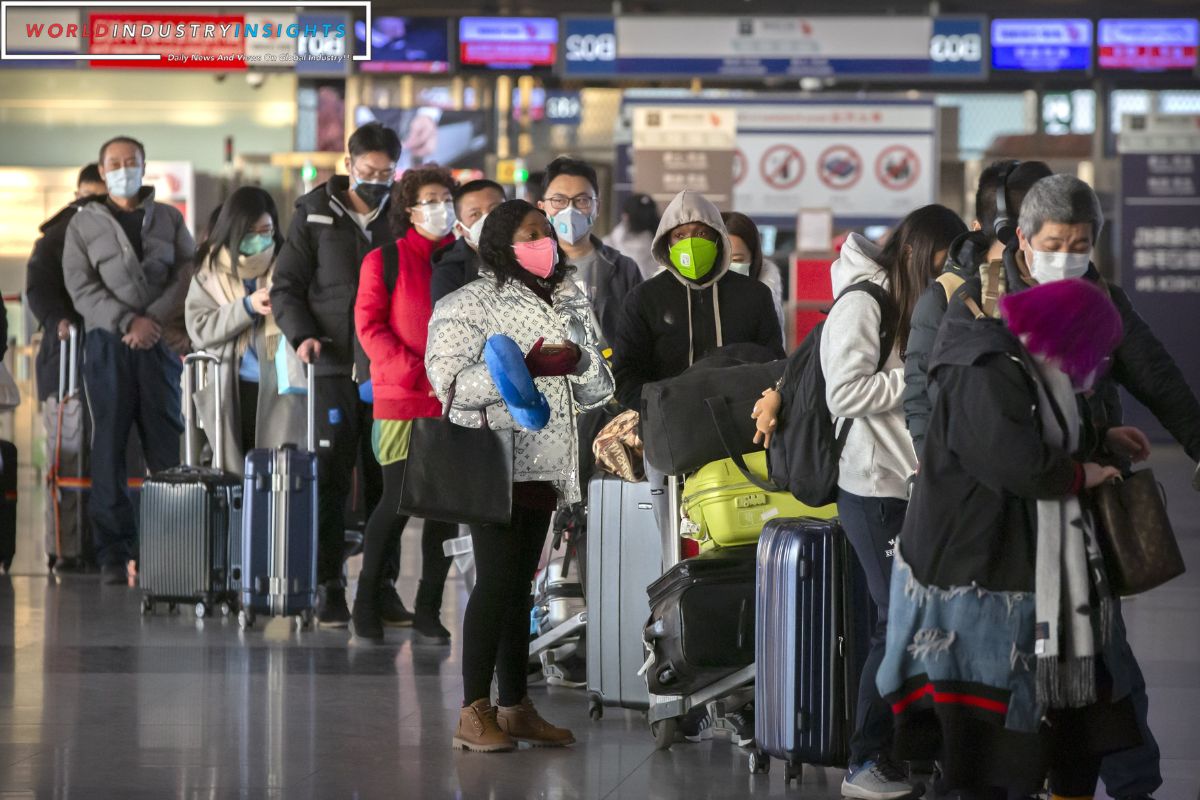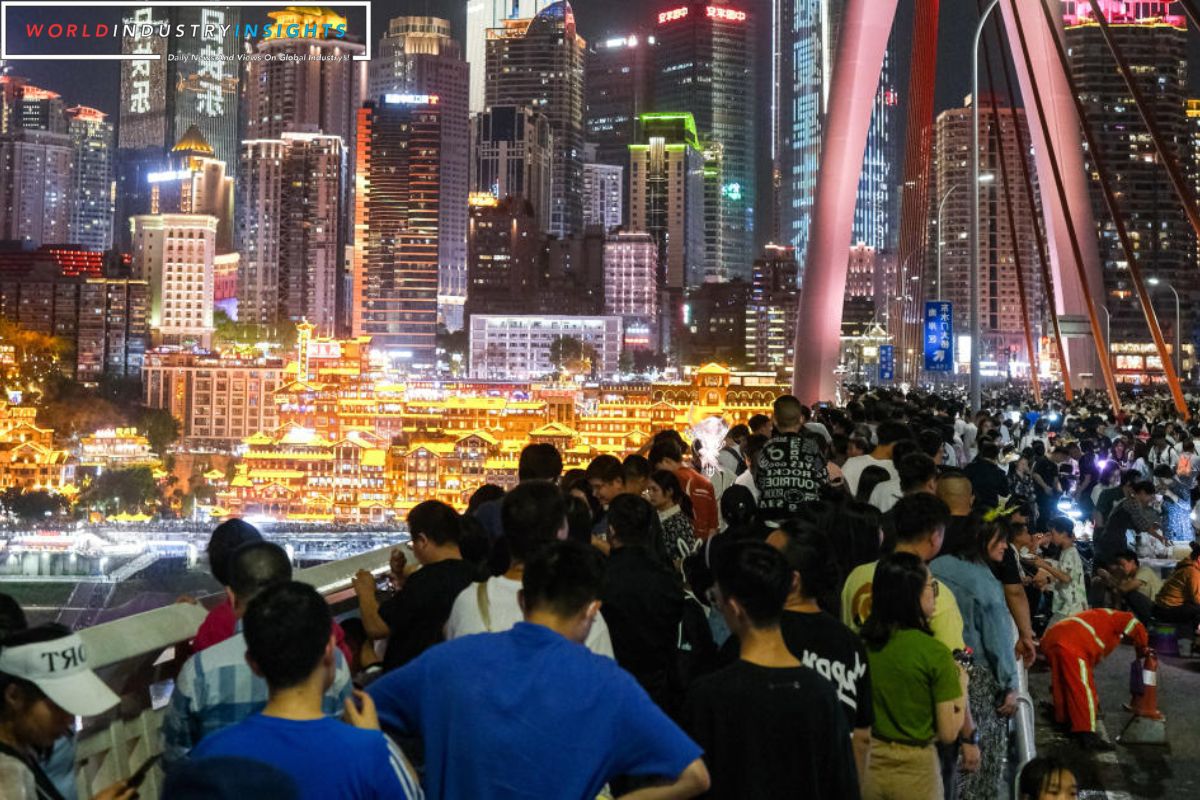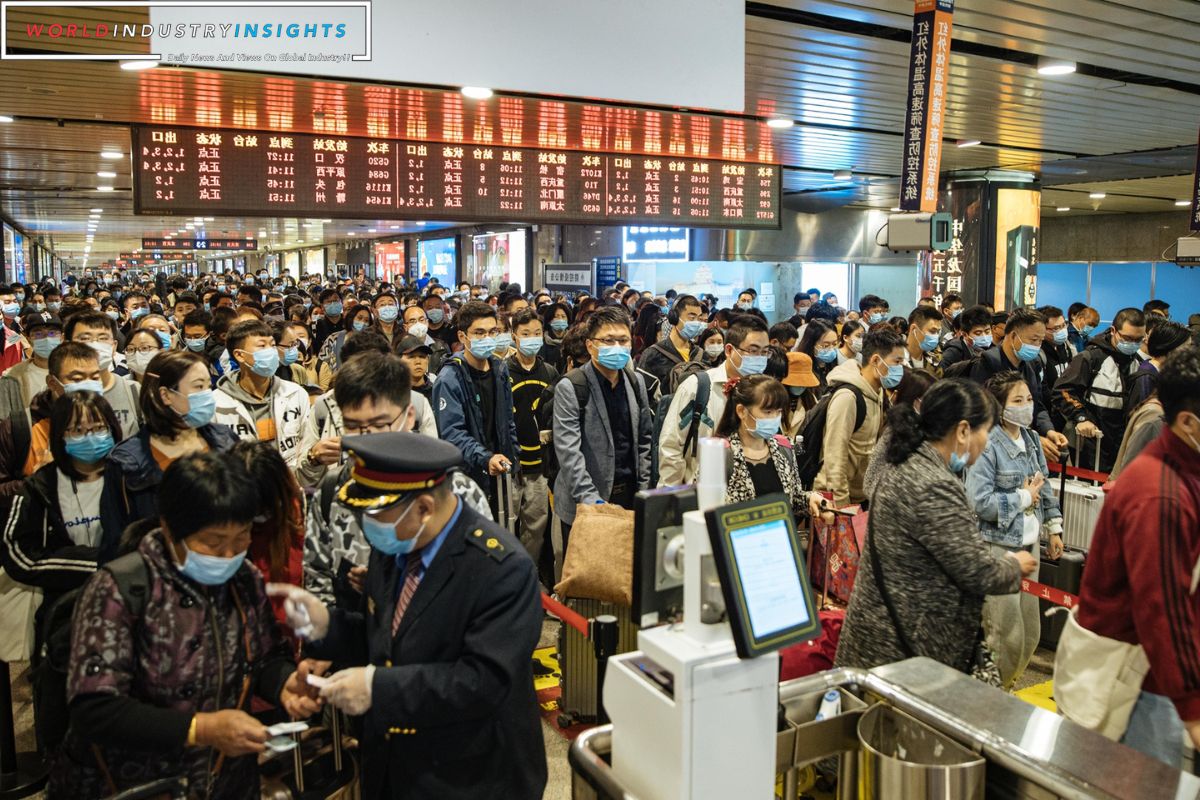China’s New Year travel has seen a remarkable rebound, reaching pre-Covid levels and reflecting a significant 39% increase. The surge in border crossings during the holiday period is indicative of a robust recovery in domestic travel and a surge in tourism revenue.
Moreover, the resurgence of international travel coupled with policy initiatives has played a vital role in this upward trajectory. The implementation of a visa-free policy and its impact on travel patterns, as well as improved relations with the U.S. through a simplified visa application process, have further contributed to the overall growth.
But what factors have driven this surge in travel, and what implications does it have for China’s tourism industry and global travel trends?
Key Takeaways
- Mainland China experienced a rebound in border crossings during the New Year holiday, surpassing pre-Covid levels.
- From December 30 to January 1, there were 5.18 million border crossings, a fivefold increase from the previous year.
- The daily average of 1.73 million entries and exits returned to levels recorded in 2019.
- The surge in domestic travel during the New Year holiday led to a threefold increase in tourism revenue, indicating a positive outlook for the travel industry in China.
Remarkable Rebound in Border Crossings During New Year Holiday
During the New Year holiday, mainland China experienced a remarkable rebound in border crossings, with arrivals and departures surpassing pre-Covid levels, according to the National Immigration Administration.
Also Read: Luxury Celebrations: High-End New Years Packages Hit $12,500 in Times Square
From December 30 to January 1, there were 5.18 million border crossings, a nearly fivefold increase from the previous year. This resurgence in travel reflects a 39% increase compared to the same period in 2019, before the Covid-19 pandemic.
The daily average of 1.73 million entries and exits not only surpassed projections but also returned to levels recorded in 2019. These figures indicate a strong recovery in China’s travel industry and suggest that people are regaining confidence in domestic and international travel.
It also highlights the effectiveness of China’s measures in containing the spread of Covid-19 and restoring normalcy to travel activities.
Robust Recovery in Domestic Travel and Tourism Revenue Surge
The domestic travel sector in China has shown a robust recovery, accompanied by a surge in tourism revenue. Here are four key factors contributing to this positive trend:
- Strong rebound in domestic travel: During the New Year holiday, there were 135 million trips nationwide, representing a significant 155.3% increase compared to the previous year. This indicates that people in China are increasingly confident in traveling within their own country.
- Tripling of tourism revenue: The surge in domestic travel has led to a threefold increase in tourism revenue compared to the same period in 2022. This remarkable growth demonstrates the resilience and potential of the Chinese travel industry.
- Recovery surpassing pre-pandemic levels: The tourism revenue during the New Year holiday also rose by 5.6% compared to the pre-pandemic level in 2019. This indicates that the domestic travel sector in China has not only recovered but has even surpassed its previous performance.
- Positive outlook for the travel industry: The robust recovery in domestic travel and the surge in tourism revenue reflect the pent-up demand for leisure and exploration after a challenging period. These trends bode well for the future of the Chinese travel industry, signaling a strong rebound and potential for further growth.
International Travel Resurgence and Policy Initiatives
China’s robust recovery in domestic travel and surge in tourism revenue have paved the way for a resurgence in international travel and a series of policy initiatives aimed at stimulating the Covid-impacted economy and attracting more visitors from abroad.
During the holiday period, mainland China recorded 2.51 million arrivals and 2.67 million departures, signaling a return to pre-Covid travel levels. This increase in international travel aligns with Beijing’s efforts to revive the tourism sector and boost economic growth.
Notably, the implementation of a visa-free policy for travelers from France, Germany, Italy, the Netherlands, Spain, and Malaysia resulted in a 28.5% increase in arrivals from these countries in December. These policy initiatives are part of China’s strategy to attract more international visitors and promote cross-border tourism.
Visa-Free Policy Implementation and Impact on Travel Patterns
The implementation of a visa-free policy for certain countries has significantly impacted travel patterns, leading to a notable increase in international arrivals to mainland China. Here are four key points regarding the visa-free policy implementation and its impact on travel patterns:
- Over 55% of travelers from the six countries entered China through visa-free channels, indicating the effectiveness of this policy in attracting foreign visitors.
- More than 77% of these travelers visited China for sightseeing, leisure, and business purposes, highlighting the diverse range of interests that the visa-free policy caters to.
- Border checkpoints were well-prepared with sufficient staff and channels to ensure a smooth implementation of the visa-free policy, facilitating exchanges and cooperation between Chinese and foreigners.
- The increase in international arrivals demonstrates the positive impact of the visa-free policy on promoting tourism and boosting economic growth in China.
Improved Relations with the U.S. Through Simplified Visa Application Process
Improved diplomatic ties between China and the United States have resulted in a simplified visa application process for U.S. tourists, aligning with China’s commitment to a more open and cooperative international environment.
Starting January 1, China implemented a streamlined visa application procedure for foreign visitors, including those from the U.S., aiming to facilitate various purposes such as business, study, tourism, work, or residence. The National Immigration Administration emphasized their dedication to high-level openness, quality development, and security in implementing these directives.
This move reflects China’s continuous efforts to improve relations with the U.S. and promote smoother interactions between the two countries. As a result, U.S. tourists can now enjoy an easier and more accessible process when traveling to China, further fostering the positive momentum between the two nations.
Conclusion Of China’s New Year Travel
China’s New Year travel has seen a remarkable rebound, reaching pre-COVID levels with a 39% increase. The country has witnessed a robust recovery in domestic travel and a surge in tourism revenue.
Additionally, international travel has also shown signs of resurgence, fueled by policy initiatives such as the implementation of a visa-free policy. Furthermore, improved relations with the U.S. through simplified visa application processes have contributed to the positive travel patterns observed during this period.
Our Reader’s Queries
Do people travel during the Chinese New Year?
China’s travel industry experienced a significant boost during the three-day New Year’s holiday, as domestic tourist trips surged to 135 million, marking a 155% increase from the previous year. The data released on Monday also revealed that domestic tourism revenue reached 79.73 billion yuan ($11.23 billion), indicating a promising start to the year for the country’s tourism sector.
Is Chinese New Year a good time to visit China?
Chinese New Year falls in late January or early February, and it’s a time when many people travel across the country. As a result, transportation and hotels can become extremely crowded. If you can, it’s best to avoid traveling to China during this period to avoid the hassle and inconvenience.
How long is China closed for Chinese New Year?
In keeping with tradition, the holiday schedule includes two significant week-long holidays: Spring Festival (also known as Chinese New Year) and the National Day holiday (commonly referred to as ‘Golden Week’). In 2024, the Spring Festival will take place from February 10 to 17, while the National Day holiday will be observed from October 1 to 7.
How many days do Chinese people get off for Chinese New Year?
For over two decades now, Chinese citizens have been granted a full week off from work to celebrate the Chinese New Year. This period of rest and rejuvenation is known as the Spring Festival, which is often used interchangeably with the Chinese New Year.




